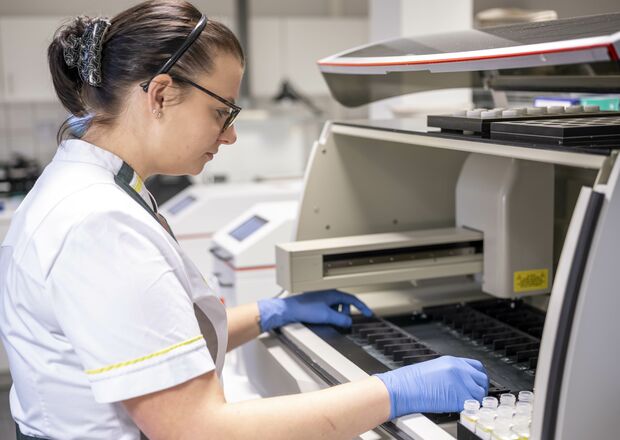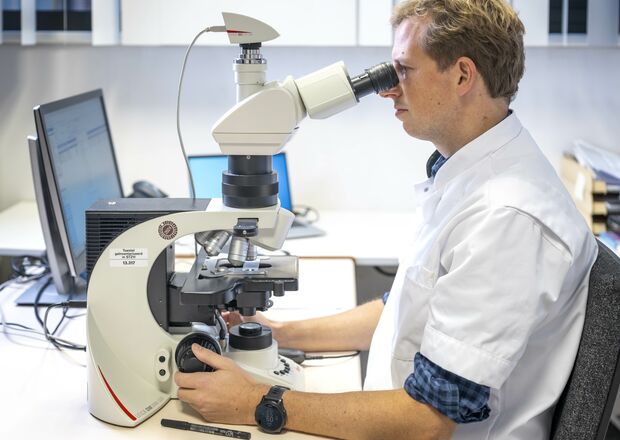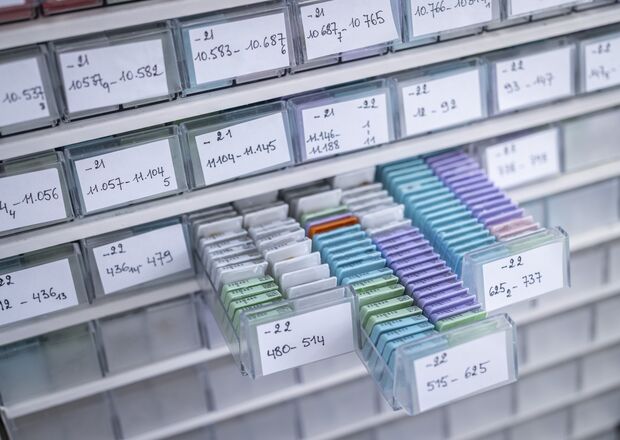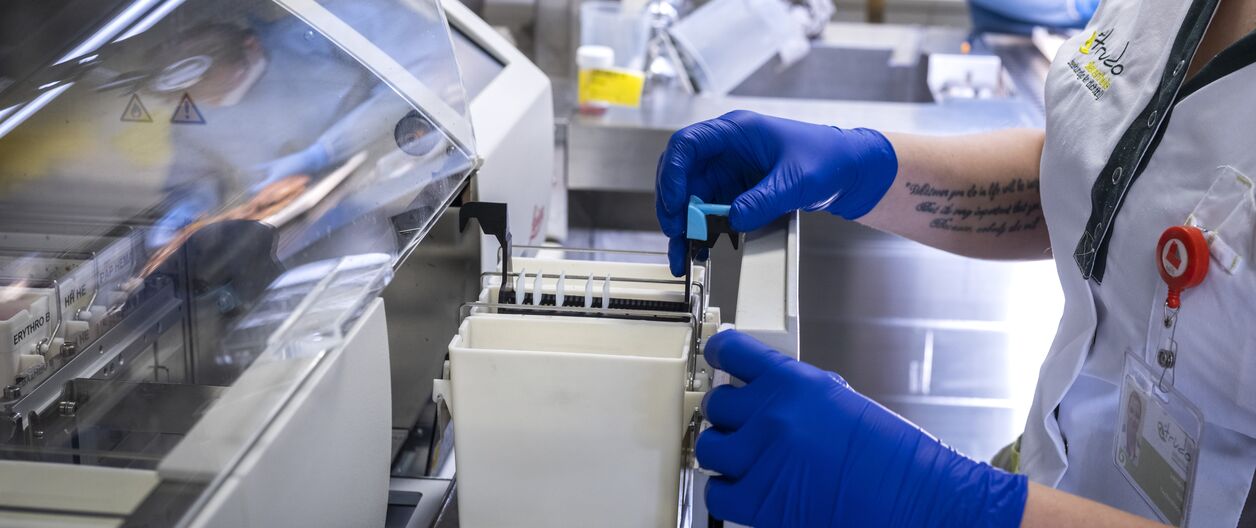Anatomopathology
As a patient, you have no direct contact with this department. Your doctor or general practitioner will discuss the result of a pathological examination with you.
Plan your appointment

What do we do?
The anatomopathology service examines tissue samples or body fluids taken by a specialist or general practitioner. Examples of tissue samples are a skin biopsy (pigment stain), stomach biopsy, appendix, tonsils, gallbladder, an organ or part of an organ (e.g. breast, prostate, small or large intestine). Loose cells in fluid can also be examined. Examples of body fluids examined in our laboratory are cervical smears, urine, pleural fluid or cerebrospinal fluid. The samples are examined and processed macroscopically and/or microscopically.
The pathologist evaluates whether the tissues and cells are normal or part of a disease process, e.g., inflammation or a tumor. If it is a tumor, the type of tumor, the degree of differentiation of the tumor, the extension (TNM classification) of the tumor and whether the tumor has been completely removed, are examined. In view of prognosis and post-treatment, the pathologist also evaluates any metastases of the tumor in lymph nodes, blood and lymph vessels.
The microscopic examination remains the cornerstone of the diagnosis but is often supplemented by additional techniques (histochemical staining, immunohistochemical staining, molecular techniques and possibly even genetic testing).

Cancer diagnostics
Weekly, pathologists participate in the Multidisciplinary Oncology Consultation (MOC), where results are discussed by a multidisciplinary team of oncologists, radiotherapists, pathologists, radiologists, surgeons and internists. Thus, based on all the data and results, the most optimal therapeutic path for each patient can be determined.
Functional diagnostics
When (suspecting) various inflammatory processes or other functional disorders, a tissue fragment is also often examined microscopically in order to demonstrate an exact cause of this inflammation or disorder. Eg: H. pylori bacteria in stomach biopsies, Crohn's disease or ulcerative colitis in prolonged diarrhea.

Prevention
The smears as part of cervical cancer prevention are processed in the lab using a high-quality 'thin-layer technique'. Molecular testing performed on the abnormal smears actively detects the HPV virus, responsible for virtually all cervical cancers.
Clinical autopsy
In the event of death in hospital (after a min. 24-hour hospitalization), a clinical autopsy may be performed to determine the exact cause of death. Conditions and considerations for requesting and performing an autopsy by a pathologist from our hospital are described in our laboratory's lab guide.
Doctors
Department Head
Cost analyses
The anatomopathology department applies the third-party payer rule this means that nothing is charged to the patient himself. Analyses that are not reimbursed are clearly indicated on our request forms and in the lab guide.


